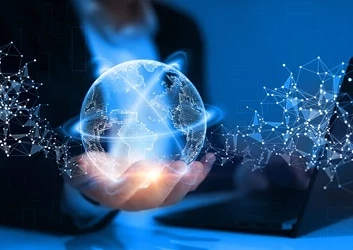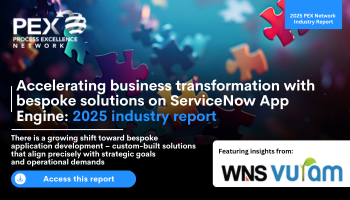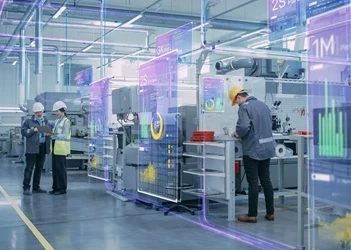Gartner unveils top 10 strategic technology trends for 2026
Gartner’s top 10 strategic technology trends for 2026 are catalysts for business transformation
Add bookmark
Gartner announced its list of top strategic technology trends that organizations need to explore in 2026. Analysts presented their findings during Gartner IT Symposium/Xpo in Orlando, Florida.
The trends represent more than technology shifts; they are catalysts for business transformation, according to Gartner VP analyst Tori Paulman. They reflect the realities of an artificial intelligence (AI) powered, hyperconnected world where organizations must drive responsible innovation, operational excellence (OPEX), and digital trust.
Join the PEX Network community

Don't miss any news, updates or insider tips from PEX Network by getting them delivered to your inbox. Sign up to our newsletter and join our community of experts.
Learn MoreGartner’s top 10 strategic technology trends for 2026
“Technology leaders face a pivotal year in 2026, where disruption, innovation, and risk are expanding at unprecedented speed,” said Gene Alvarez, distinguished VP analyst at Gartner.
“What feels different this year is the pace,” added Paulman. “We’ve seen more innovations emerge in a single year than ever before. Because the next wave of innovation isn’t years away, organizations that act now will not only weather volatility but shape their industries for decades to come.”
1. AI super computing platform
AI supercomputing platforms bring together CPUs, GPUs, AI-specific ASICs, neuromorphic chips, and other emerging computing models to help organizations manage complex workloads with greater performance, efficiency, and innovation. These systems integrate high-performance processors, large-scale memory, specialized hardware, and intelligent orchestration tools to power demanding tasks such as machine learning, simulation, and advanced analytics.
According to Gartner, by 2028, more than 40 percent of leading enterprises will have integrated hybrid computing architectures into their core business operations, up from just 8 percent today.
“This capability is already driving innovation across a diverse range of industries,” said Paulman. “For example, in healthcare and biotech, companies are modeling new drugs in weeks instead of years. In financial services, organizations are simulating global markets to reduce portfolio risk, while utility providers are modeling extreme weather to optimize grid performance.”
2. Multiagent systems
Multiagent systems (MAS) consist of multiple AI agents that interact to pursue individual objectives or collaborate on shared, complex goals. These agents can operate within a single environment or be independently developed and deployed across distributed systems.
“Adopting multiagent systems gives organizations a practical way to automate complex business processes, upskill teams, and create new ways for people and AI agents to work together,” said Alvarez.
3. Domain-specific language models
Generic large language models (LLMs) often fall short for specialized tasks. Domain-specific language models (DSLMs) fill this gap with higher accuracy, lower costs, and better compliance, Gartner stated.
DSLMs are language models trained or fine-tuned on specialized data for a particular industry, function, or process. Unlike general-purpose models, DSLMs deliver higher accuracy, reliability, and compliance for targeted business needs.
4. AI security platforms
AI security platforms provide a unified way to secure third-party and custom-built AI applications. They centralize visibility, enforce usage policies, and protect against AI-specific risks such as prompt injection, data leakage, and rogue agent actions. These platforms help CIOs enforce use policies, monitor AI activity, and apply consistent guardrails across AI.
Gartner predicts that over 50 percent of enterprises will use AI security platforms to protect their AI investments by 2028.
5. AI-native development platforms
AI-native development platforms leverage generative AI to accelerate and simplify software creation beyond traditional methods. These platforms empower software engineers, often embedded within business units as “forward-deployed engineers,” to collaborate closely with domain experts in building applications. This model enables small, agile teams, augmented by AI, to deliver more software without increasing headcount.
Leading organizations are also establishing lean platform teams that equip non-technical domain experts to develop applications themselves, all within secure and governed environments.
6. Confidential computing
Confidential computing changes how organizations handle sensitive data. By isolating workloads within hardware-based trusted execution environments (TEEs), sensitive data and processes remain private even from infrastructure owners, cloud providers, or those with physical access to the hardware. This approach is particularly valuable for regulated industries, global operations navigating compliance and geopolitical risks, and scenarios involving collaboration between competitors.
By 2029, Gartner predicts more than 75 percent of operations processed in untrusted infrastructure will be secured in-use by confidential computing.
7. Physical AI
Physical AI brings intelligence into the real world by enabling machines and devices, such as robots, drones, and smart equipment, to sense, decide, and act. It delivers measurable benefits in industries where automation, adaptability, and safety are critical.
As AI adoption expands, organizations must develop new skill sets that bridge IT, operations, and engineering. This shift opens opportunities for upskilling and cross-functional collaboration, but it also raises workforce concerns and calls for thoughtful change management.
8. Preemptive cybersecurity
“Preemptive cybersecurity is about acting before attackers strike using AI-powered SecOps, programmatic denial, and deception,” said Paulman. “This is a world where prediction is protection.”
Preemptive cybersecurity is trending as organizations face an exponential rise in threats targeting networks, data, and connected systems.
9. Digital provenance
As organizations increasingly depend on third-party software, open-source code, and AI-generated content, verifying digital provenance (the origin, ownership, and integrity of digital assets) has become critical. Tools like software bills of materials (SBoMs), attestation databases, and digital watermarking now enable organizations to track and validate software, data, media, and processes across the supply chain.
Gartner forecasts that by 2029, enterprises that neglect to invest in digital provenance capabilities could face compliance and sanction risks potentially costing billions.
10. Geopatriation
Geopatriation refers to the shift of company data and applications from global public clouds to local alternatives, such as sovereign clouds, regional providers, or on-premises data centers, in response to perceived geopolitical risks. Once primarily a concern for governments and financial institutions, cloud sovereignty is now a growing priority across industries amid rising global instability.
“Shifting workloads to providers with an increased sovereignty posture can help CIOs gain more control over data residency, compliance, and governance,” said Alvarez. “This greater control may improve alignment with local regulations and build trust with customers who are concerned about data privacy or national interests.”
Accelerating business transformation with bespoke solutions on ServiceNow App Engine

Today, off-the-shelf software solutions offer diverse features that enable vast opportunities to implement and maintain business transformation. However, in some circumstances, capabilities lack the flexibility and specificity required to address the unique challenges and workflows of individual organizations. As a result, there is a growing shift toward bespoke application development – custom-built solutions that align precisely with strategic goals and operational demands.
Download this report to explore how enterprises can harness the power of custom applications to drive meaningful transformation. With the growing adoption of low-code platforms like ServiceNow App Engine, organizations are building custom applications faster and with greater control. By empowering both IT professionals and citizen developers to build tailored solutions, organizations can significantly reduce time to value while maintaining control over quality and compliance.
Download Now












